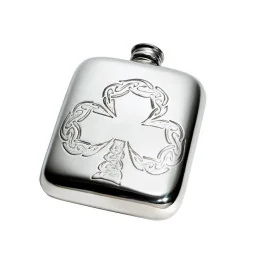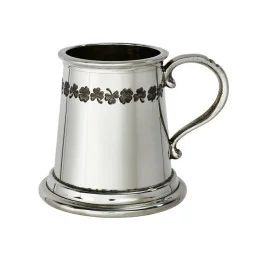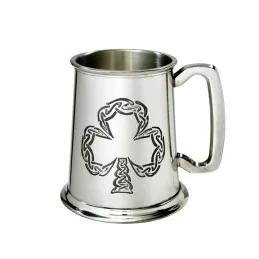- There are no more items in your cart
- Shipping
- Total £0.00
The Shamrock: Ireland's Timeless Emblem
The shamrock is an iconic symbol intricately woven into the fabric of Irish history, culture, and folklore. This simple, three-leaved plant has journeyed through the ages, evolving from an ancient Celtic symbol to a modern-day emblem of Irish identity and pride. Let's explore the rich history and significance of the shamrock.
Celtic Roots: A Symbol of Balance and Harmony
The origins of the shamrock stretch back to the ancient Celts, who revered the number three as a symbol of balance and harmony. To them, the three leaves of the shamrock represented important tripartite themes in their culture, such as land, sea, and sky or past, present, and future. This deep-rooted symbolism made the shamrock a revered plant in Celtic traditions.
St. Patrick and the Holy Trinity
One of the most enduring legends of the shamrock is its association with St. Patrick, the patron saint of Ireland. According to tradition, St. Patrick used the shamrock to explain the concept of the Holy Trinity to the pagan Irish during his missionary work in the 5th century. The three leaves of the shamrock illustrated the Father, the Son, and the Holy Spirit as three distinct entities that are one in the same, helping to convert many to Christianity
From Rebellion to Nationalism
By the 18th century, the shamrock had become a powerful symbol of Irish identity and resistance. During the 1798 Irish Rebellion against British rule, Irish soldiers wore shamrocks in their hats as a symbol of rebellion and solidarity. This tradition helped cement the shamrock as a symbol of Irish patriotism and resistance.
The Shamrock in the 19th and 20th Centuries
Throughout the 19th and 20th centuries, the shamrock continued to symbolise Irish nationalism, especially during the struggle for independence in the early 20th century. It was embraced by various nationalist groups and became a potent emblem of Irish heritage and pride.
St. Patrick's Day: A Global Celebration
Today, the shamrock is synonymous with St. Patrick's Day, celebrated on March 17th. It is worn and displayed by people worldwide, honouring Irish culture and heritage. From parades to festive attire, the shamrock is at the heart of the celebration, symbolising the spirit of Ireland.
The Shamrock in Modern Times
The shamrock's significance extends beyond folklore and celebrations. It is used by the Irish government and various institutions as a symbol of Ireland. For instance, Aer Lingus, Ireland's national airline, and the Irish rugby team prominently feature the shamrock in their logos.
A Symbol of Good Luck
In addition to its historical and cultural significance, the shamrock is often considered a symbol of good luck. This belief is closely tied to the folklore of the four-leaf clover, which is a rare variation believed to bring exceptional luck to those who find it.
The Botanical Shamrock
Interestingly, the term "shamrock" can refer to several species of clover. The most commonly accepted varieties include:
- Trifolium dubium (lesser clover)
- Trifolium repens (white clover)
- Medicago lupulina (black medic)
- Oxalis acetosella (wood sorrel), though less commonly
Conclusion
The shamrock is much more than a simple plant; it is a symbol rich in history and meaning. From its ancient Celtic origins to its role in Christian teachings, and from a symbol of rebellion to an emblem of national pride, the shamrock's story is as vibrant and enduring as the Irish spirit itself. So, the next time you wear a shamrock or see it proudly displayed, remember the deep cultural roots and the powerful history it represents.
Celebrate the shamrock, celebrate Ireland! ☘️







Leave a comment
Log in to post comments